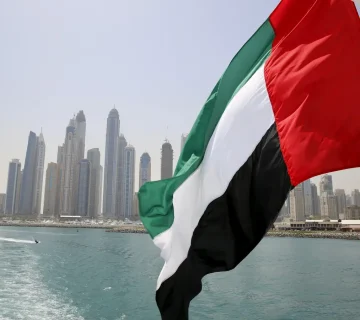
What you must understand before assuming international growth means opportunity
The reasons to invest domestically and abroad are the same: to potentially earn money on your investment choices and diversify your portfolio to manage risk.
A short global history
Decades ago, the leading economies were found mainly in the United States and Western Europe. But things began to change as manufacturing moved to Asia and Latin America. The thriving economies of Asia, such as South Korea and Singapore, began gaining the attention of American investors. Then in 2001, an analyst coined the acronym BRIC when discussing then-emerging markets of Brazil, Russia, India, and China. These economies have seen rapid growth in the last decade, though have shown recent signs of slowing down. Other up-and-coming markets that have recently begun to receive more attention include Mexico, Indonesia, Turkey, Hong Kong, and the United Arab Emirates.
The difference between emerging and developed markets
While some economists disagree on the criteria that defines a nation as “developed,” most agree that the term applies to countries that have highly developed capital markets with ample liquidity, serious regulatory agencies, large market capitalization, and high levels of per-capita income. You can find developed markets in the U.S., Canada, Germany, the United Kingdom, Australia, New Zealand, and Japan.
An emerging market can be defined as a country undergoing rapid growth that has lower personal incomes and may have a new or yet-to-be established market structure and infrastructure. Some emerging markets include Colombia, Egypt, South Africa, Turkey, and Vietnam. The term also can include what analysts call Frontier Markets, which are nations that are slowly adapting to modern capitalism such as Bangladesh, Botswana, and Nigeria.
Why Invest Internationally?
There are two reasons to consider international investing: diversification and growth. Because international investment returns can move in a different direction than U.S. market returns, investing internationally could help guard against some of the risks associated with a U.S.-based portfolio. With a portfolio that includes domestic and foreign stocks, you could potentially reduce the risk of losing money if U.S. markets decline.
Investing internationally also lets you capture investment opportunities that arise from fast-growing economies and markets whose currencies are appreciating against the dollar.
Just like the adage about not putting all of your eggs in one basket, investing overseas may spread your portfolio’s risk. By diversifying internationally, you are not stuck with one type of security in a single region or subject to the performance of one asset class.
Financial involvement in other markets also means looking into the currencies of different nations. By diversifying the currencies in which you invest, you are hedging against potential dips in the U.S. dollar.
ETFs and Mutual Funds
Exchange-traded funds (ETFs) and mutual funds are two popular options for many investors looking overseas for opportunities.
ETFs are traded on a stock exchange, either in the U.S. or in other countries and regions. ETFs are usually tied to an index of securities such as equities, bonds, and commodities. They are attractive to investors for their relatively low and stable costs, tax efficiency, and resemblance to individual stocks in terms of performance.
ETFs differ somewhat from mutual funds, which pool money together from thousands of small investors to buy larger quantities of stocks, bonds, or other securities with those funds. The term “mutual fund” is popular in the U.S. and Canada, but similar tools in other regions may have different names. (For example, in the United Kingdom, the term is open-ended investment company (OEIC); in Western Europe this tool is referred to as a SICAV, which roughly translates to Collective Investment Scheme Common)1.
Crossing risky waters
As with any investment, international opportunities can present risk and unique concerns. Although emerging markets can offer stronger growth opportunities, they are often more volatile than developed markets. You’ll need to look out for the following risks when considering international investments:
Political risk. Many parts of the world are undergoing immense changes, including the Middle East, parts of Asia, and Latin America. Some countries within these regions are not only new to capitalism, they are also new to democracy and the rights of workers as well as investors. Investors in developed countries also have to be aware of potential political risks.
Information risk. Foreign countries have different views on the flow of news and information. Some nations embrace an open press, while others curb social media such as Twitter and Facebook. If you are investing in a country or region where the dissemination of information is curtailed by a political, military, or cultural leader, you may want to proceed with caution.
Currency / liquidity risk. Different parts of the globe experience trouble with their currencies as a result of events investors can’t foresee or control. For example, the well-publicized debt issues of some countries within the Eurozone, such as Portugal, Italy, Ireland, Greece, and Spain, had a negative impact on the value of the euro. Investing overseas requires you to closely follow news and trends from various regions and keep a keen eye on potential currency fluctuations.
The percentage of your portfolio you invest internationally will depend on your risk tolerance and your long-term financial plan. An experienced financial professional can help you decide what’s right for you.



